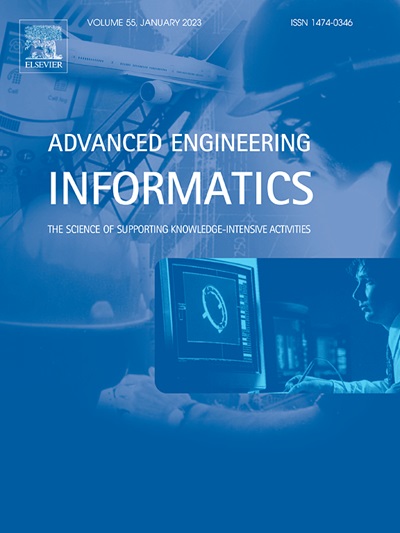SLDAE: An interpretable stacked Denoising Auto-Encoders for fan fault diagnosis on steelmaking workshops
IF 8
1区 工程技术
Q1 COMPUTER SCIENCE, ARTIFICIAL INTELLIGENCE
引用次数: 0
Abstract
Fault diagnosis of the fan in steelmaking shops has significant practical value in guaranteeing smooth operation and achieving quality control of steel coils. The existing data-driven systems, mainly deep neural network-based diagnostic models, have achieved some success in recognizing fan faults. However, these models face a significant challenge in reaching reliable diagnostic conclusions with uncertainty due to the absence of interpretable representations between fault labels and features. To address this issue, this paper develops and evaluates an interpretable model, namely Stacked Logic Denoising Auto-Encoders (SLDAE). SLDAE is a flexible neural-symbolic system that extracts confidence rules and Binary Decision Logic (BDL) rules to explain how SDAE conducts feature learning, and conducts uncertain reasoning of diagnostic decision-making. To extract confidence rules, a logic grouping DAE is designed to consider the impact of different literals on neuron activation so as to reduce information loss. To extract BDL rules, we design a novel network structure, Discrete Logic Networks (DLNs), to facilitate extracting implicit relationships between fault features and labels while learning and representing the belief of BDL rules. Experiments verified on two fan datasets indicate that SLDAE can perform quantitative reasoning of uncertain diagnostic logic and exhibits a notable performance in fault recognition.
炼钢车间风机的故障诊断对于保证平稳运行和实现钢卷质量控制具有重要的实用价值。现有的数据驱动系统,主要是基于深度神经网络的诊断模型,在识别风机故障方面取得了一些成功。然而,由于故障标签和特征之间缺乏可解释的表征,这些模型在得出具有不确定性的可靠诊断结论方面面临巨大挑战。为解决这一问题,本文开发并评估了一种可解释的模型,即堆叠逻辑去噪自动编码器(SLDAE)。SLDAE 是一个灵活的神经符号系统,可提取置信度规则和二元决策逻辑(BDL)规则来解释 SDAE 如何进行特征学习,以及如何进行诊断决策的不确定推理。为了提取置信规则,我们设计了一个逻辑分组 DAE,以考虑不同字面对神经元激活的影响,从而减少信息丢失。为了提取BDL规则,我们设计了一种新型网络结构--离散逻辑网络(DLN),以便在学习和表示BDL规则的信念时提取故障特征与标签之间的隐含关系。在两个风扇数据集上验证的实验表明,SLDAE 可以对不确定的诊断逻辑进行定量推理,并在故障识别方面表现出显著的性能。
本文章由计算机程序翻译,如有差异,请以英文原文为准。
求助全文
约1分钟内获得全文
求助全文
来源期刊

Advanced Engineering Informatics
工程技术-工程:综合
CiteScore
12.40
自引率
18.20%
发文量
292
审稿时长
45 days
期刊介绍:
Advanced Engineering Informatics is an international Journal that solicits research papers with an emphasis on 'knowledge' and 'engineering applications'. The Journal seeks original papers that report progress in applying methods of engineering informatics. These papers should have engineering relevance and help provide a scientific base for more reliable, spontaneous, and creative engineering decision-making. Additionally, papers should demonstrate the science of supporting knowledge-intensive engineering tasks and validate the generality, power, and scalability of new methods through rigorous evaluation, preferably both qualitatively and quantitatively. Abstracting and indexing for Advanced Engineering Informatics include Science Citation Index Expanded, Scopus and INSPEC.
 求助内容:
求助内容: 应助结果提醒方式:
应助结果提醒方式:


